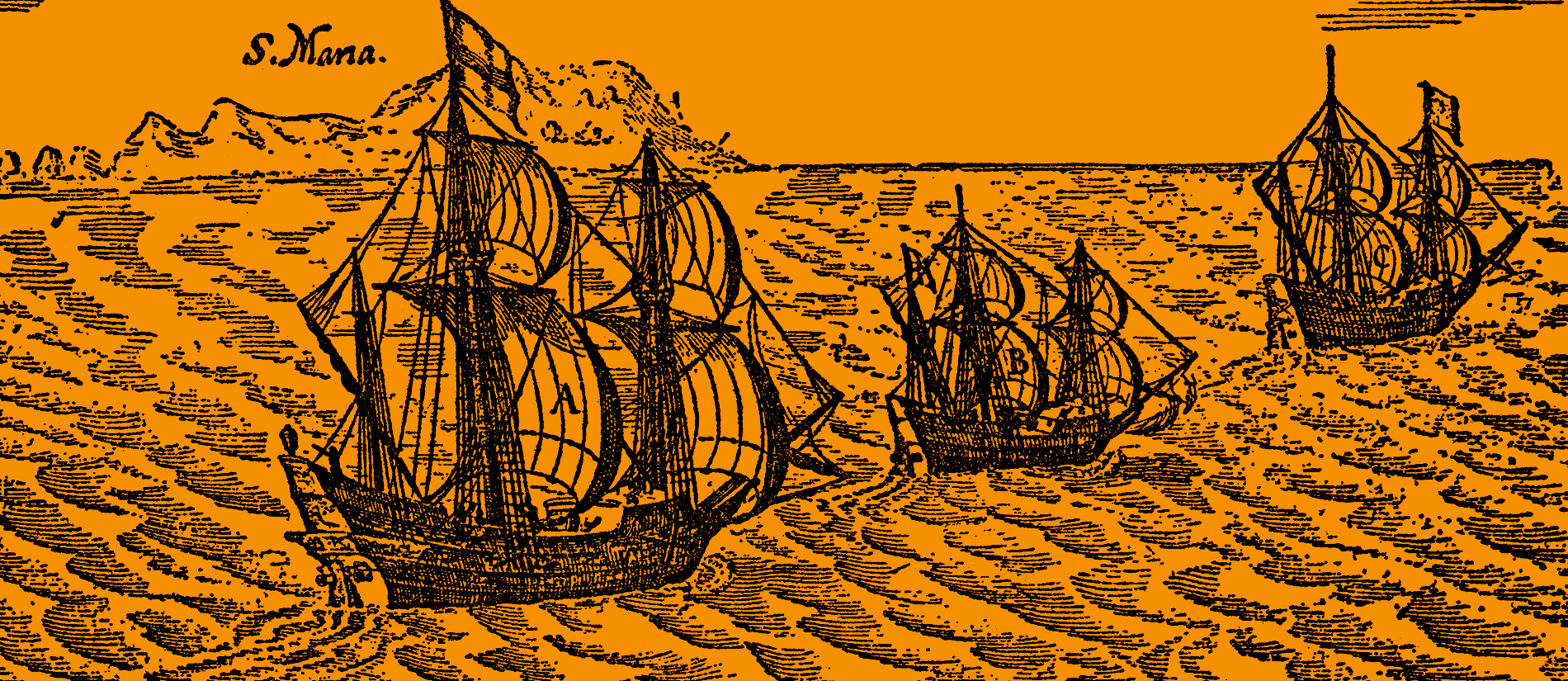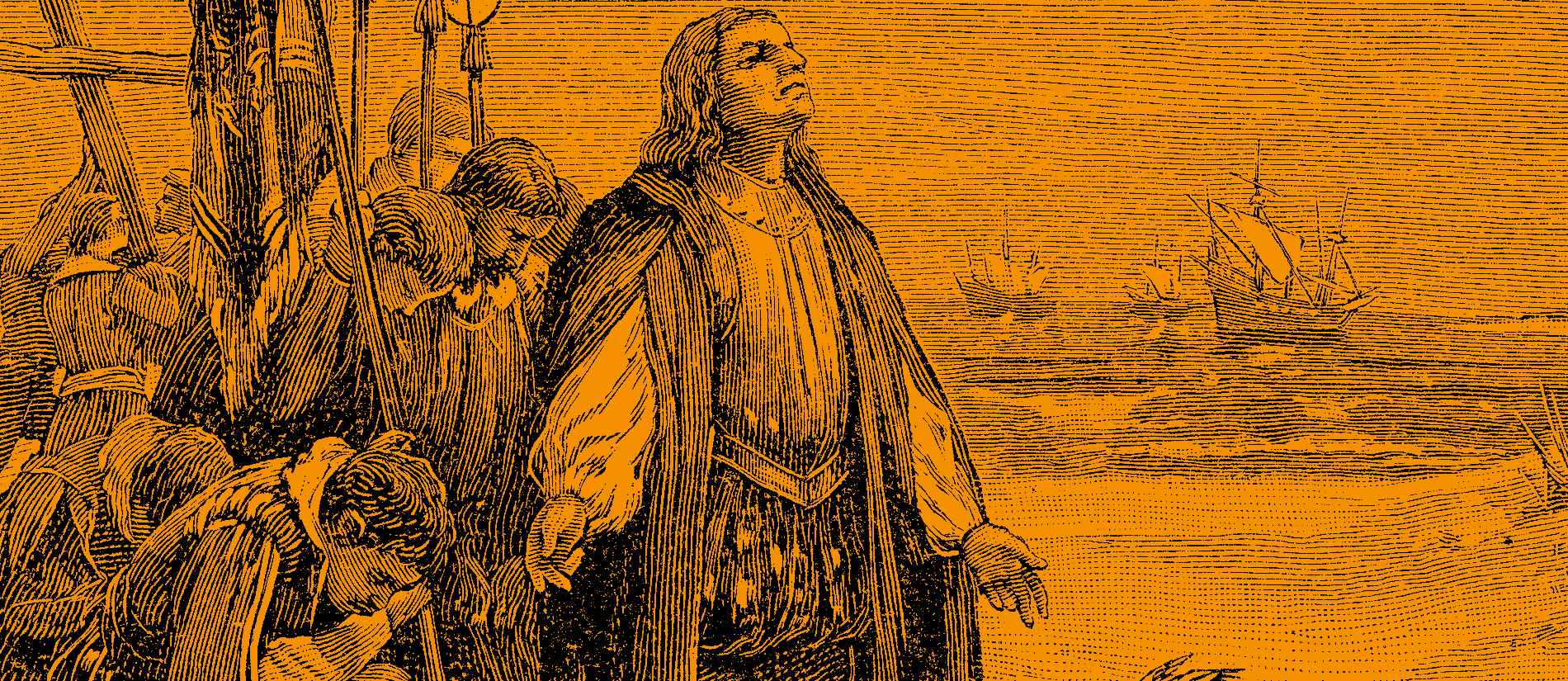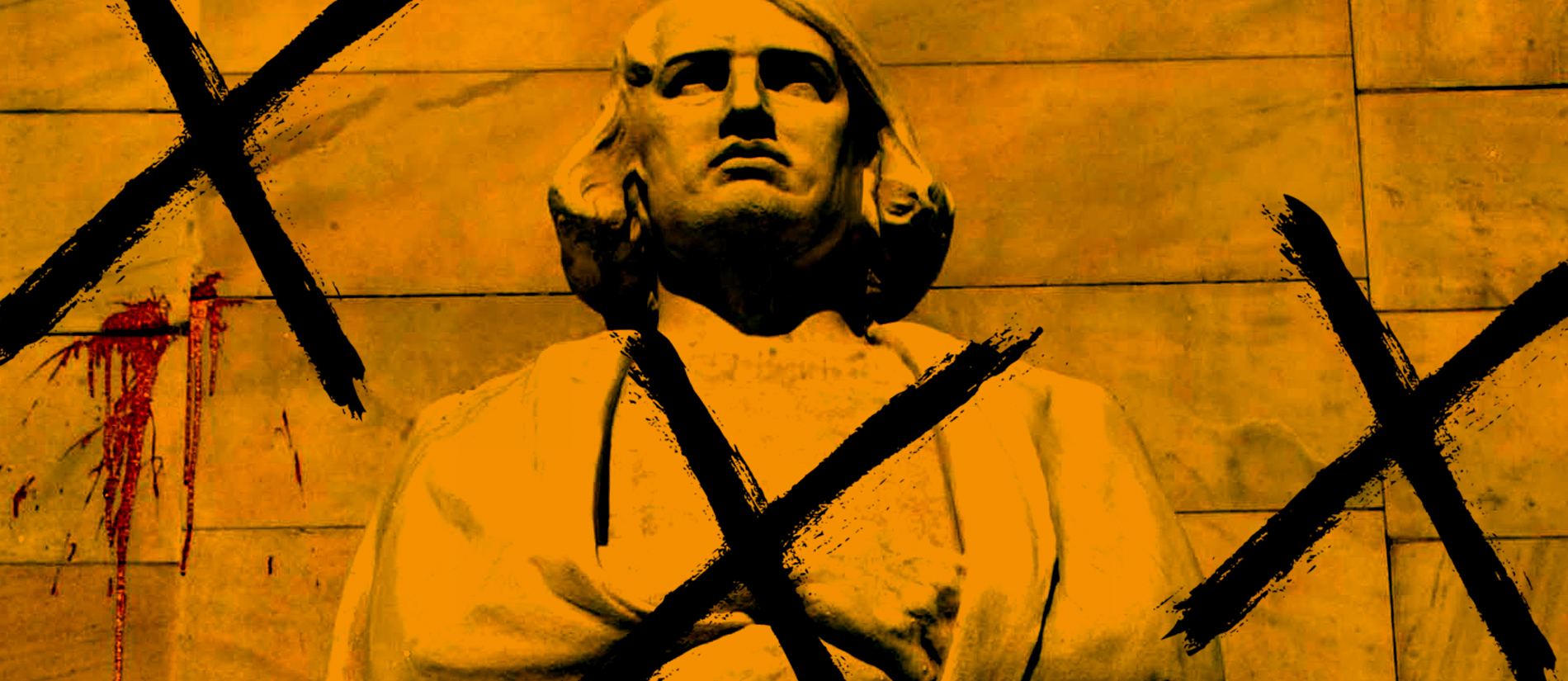Let’s talk history. Not pre-Columbian history or even 1492 history, but 2002. Seventeen years ago.
It was early fall and season four of The Sopranos was just getting rolling. Episode three of that season, titled “Christopher,” opens on Tony Soprano’s goons sitting outside a butcher shop doing their Mafiosi thing. One of them calls out “Oh! Massachusetts!” as a car drives by, playing a time-passing game of spotting license plates for money. It was a cold, dark era before smartphones, folks. Then Bobby (a soft-spoken mobster) starts reading from the newspaper. “Listen to this shit,” he laments. “The New Jersey Council of Indian Affairs has announced plans to disrupt Monday’s Columbus Day parade in Newark.”
This does not go over well with the cadre of Italian-Americans sitting at the table. The racial slurs and incriminations get to the point where young Christopher Moltisanti — no doubt named after Columbus — interjects with, “you gotta admit, they did get massacred, the Indians.” That too is met with dismissal from enforcer Silvio who feels personally affronted –“It’s not like we didn’t give them a bunch of shit to make up for that!”
This was all played for a joke on The Sopranos, but that sentiment is something every Indigenous person in the Americas lives with every single day of our lives. We hear it from our seemingly woke friends and sometimes our own relatives. As if we’re meant to say, “Thank you, kind colonizers, for giving us pieces of our ancestral land and letting us play roulette on it.”
Why rehash this scene from a TV show that stopped airing more than a decade ago? Because while most social justice issues have seen some sort of progress in that time, this cold open is still indicative of where we are today. Columbus’s real place in history remains fraught with myth, outright lies, and denial driven by colonial and migrant pride.
Meanwhile, the overt marginalization of Indigenous peoples marches on. Just check out this screengrab from a baseball game played in October 2019.
Man, I can’t believe the kind of stuff they put on TV back in the… OMG THAT’S FROM TONIGHT SERIOUSLY SO BAD. pic.twitter.com/MXUWYVvHIU
— Marc Carig (@MarcCarig) October 10, 2019
See, if you’re Indigenous, you cannot even turn on a TV and watch sports without being reminded of your culture’s destruction. Our obliteration is signposted on Columbus Ave. and Columbus Circle and the cities and towns that bear the raper and pillager’s name. So expect people to protest on Columbus Day. Expect to see a few tweets go viral. And do celebrate “Indigenous People’s Day” instead. But also know that the wound of Columbus goes far beyond a day in October. Columbus is someone who’s penetrated deep into the American psyche.
Which begs the question, do we still need him to be part of our culture? Like… at all? Do we need statues of the man? Do we need his name on our streets, hometowns, counties, and countries any more?

Columbus’s name might seem trivial, just something folks should deal with or representative of “the wrong fight”, but that discounts the wide swath of destruction the man left behind. Beyond streets and plazas from Spain to the Philippines and back to Italy, there’s the whole damn country of Colombia. Does the “explorer’s” legacy deserve that? Martin Luther King and Gandhi don’t have countries. There’s no Mother Teresalia. And it’s not like Colombia has even been Colombia that long. For a few hundred years of Spanish colonization, it was New Granada. Before that, it was known as Cundinamarca, which is its Indigenous name meaning “condor’s nest.” You have to admit, that’s a lot cooler.
Okay, that example is well out of the locus of our control. So let’s look at the U.S. There are 14 cities and towns named after Columbus. There are approximately 19,495 cities and towns in the United States. Would you even notice if the various Columbuses settled on new names?
Let’s do a little mental experiment with the two biggest Columbuses.
- Columbus, Ohio (pop.879,710 ) is situated in an area that was heavily populated by the Wyandotte, Mingo, Shawnee, Delaware, Miami, and Ottawa communities — Iroquois and Algonquin speakers. While it’s on the history books that Columbus was “founded” as the state capitol, there were plenty of settlements already around that area for eons.
- Before colonization, Columbia, South Carolina was part of a collection of towns called Cofitachequi. Spanish colonial expeditions cite the area as being heavily populated with large cities comprising the eastern edges of the Mississippian culture. Like, the area in and around Columbus, the history of these places goes millennia beyond the last few hundred years of British colonial and US Government rule.
Clearly, there’s enough history in both cities to pull new names from.
What, then, would we be losing if we returned to the Indigenous names of these places? It’s not like Indigenous place names throughout the Americas — and the United States especially — are a huge part of our identity already. 26 out of the 50 states have Indigenous names. Remember the scene from The Sopranos cited above that opens with someone shouting “Massachusetts!”? That’s one of them.
Maybe this doesn’t always have to lead be a return to an Indigenous name, either. Why not rename Columbus, Ohio to celebrate the fact that it was a major stop on the Underground Railroad? Anything would be better than naming the city after a genocidal colonizer from over 500 years ago.

Before you counter with “it’s already named, just let it be,” know this: Place names always change. Post-WWII Europe saw a massive amount of change in town and city names as ethnic Germans were ethnically cleansed from Eastern and Southern Europe and Poles were moved west. That was mimicked again with the fall of the Iron Curtain in the late 1980s/early 1990s. The thrust of those name changes was removing monstrous men like “Stalin,” “Lenin,” “Karl Marx,” and “Tito” from city names and returning them to their Indigenous monickers. Stalingrad was once again Volgograd (Russia). Leningrad was once again Saint Petersburg (Russia). Karl-Marx-Stadt was once again Chemnitz (Germany). Titograd was once again Podgorica (Montenegro).
That happened in the 1990s. Not so long ago.
Moreover, Australia and Canada have taken to moving back to Indigenous names in their provinces, territories, and towns as well. Ayer’s Rock returned to its Indigenous name, Uluru, in 1993. In 1999, Canada renamed part of the Northwest Territories Nunavut. The new capital was renamed from Frobisher Bay to Iqaluit.
Place names change in the U.S., too. In October of 2016, Barrow, Alaska was renamed Utqiagvik, an Inuit word meaning “the place for gathering roots.” Nordoff, California was renamed Ojai due to anti-German sentiment during World War One. Ojai is a Chumash word meaning “moon.”
If you wanted to go back even further, after Alexander the Great’s influence faded from Central Asian memories, Alexander’s name was taken off of towns in those territories and their Indigenous names were returned — that was 2000 years ago. Locals across Europe dropped Latin/Roman names off their towns once that empire collapsed — that was 1500 years ago.
The point here is, names of places change all the time, especially when a society or culture decides it’s time to move on. So, why then, would we keep place names of a person we know — without a doubt — was one of history’s most unrepentant monsters?

There is an argument to be made for keeping certain realities around for historical reasons: Sparking conversation, acknowledging history, creating an avenue for education. Having a place named after Columbus means that we can open a dialogue to directly cite that man’s atrocities, the myth-making that led to his ascendancy, and what it means for people who have to live under the yoke of colonization that he gave rise to today. Those conversations are indeed essential.
Counterpoint, you can do all of that without exalting one of history’s greatest evil-doers with honorifics. The Germans didn’t keep Adolf Hitler’s name (or even Stalin’s name) on their towns and roads and plazas in some misguided attempt at education. They keep those conversations alive through education, journalism, and art.
It could be argued that taking Stalin’s and Hitler’s names down, and going back to more traditional names, highlighted the gravity of their crimes in a way that leaving them up for “conversational” purposes never could. That is, leaving up statues and keeping old names alive opens the door for misinterpretations and for the myths to continue. Whereas changing names is a big bold line in the sand, “We’re trying to evolve on this matter.”
Would losing the place names associated with Christopher Columbus really make your day-to-day that much different? In fact, if Indigenous names were returned (or new names were chosen), does that not then lead to a new conversation about what these places were before colonization? If we renamed the Columbia River “Nchi Wana” (a Sahaptin word from what is now Central Washington meaning “big river”), would that not give us a chance to have a real conversation about the people that land belongs to, how it was stolen, and where those people are now?
That’s the conversation these place names should be invoking. If done correctly, that conversation would still start with Columbus’ criminal history. But instead of ending in anger and futility, the new names would be a reminder that the world and the way we think about it can change. Progress is possible. For a group of people who still have to live with the “Tomahawk Chop” and the “Redskins” and a massive lack of representation (name three Indigenous actors or musicians, right now, go!) it wouldn’t be a cure-all. But it would be a start.

